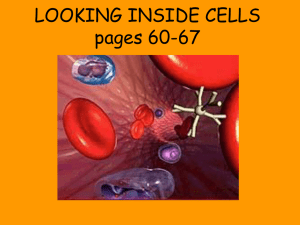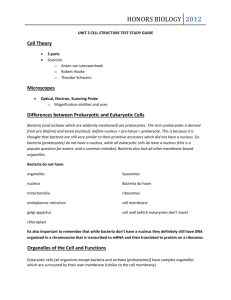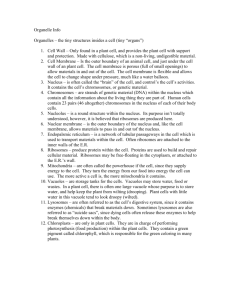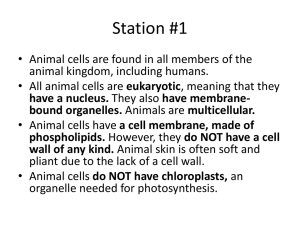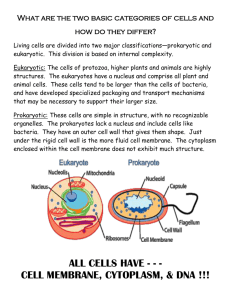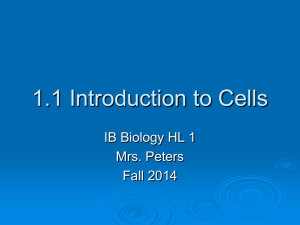What is a Cell? - a Biology Study Guide
advertisement
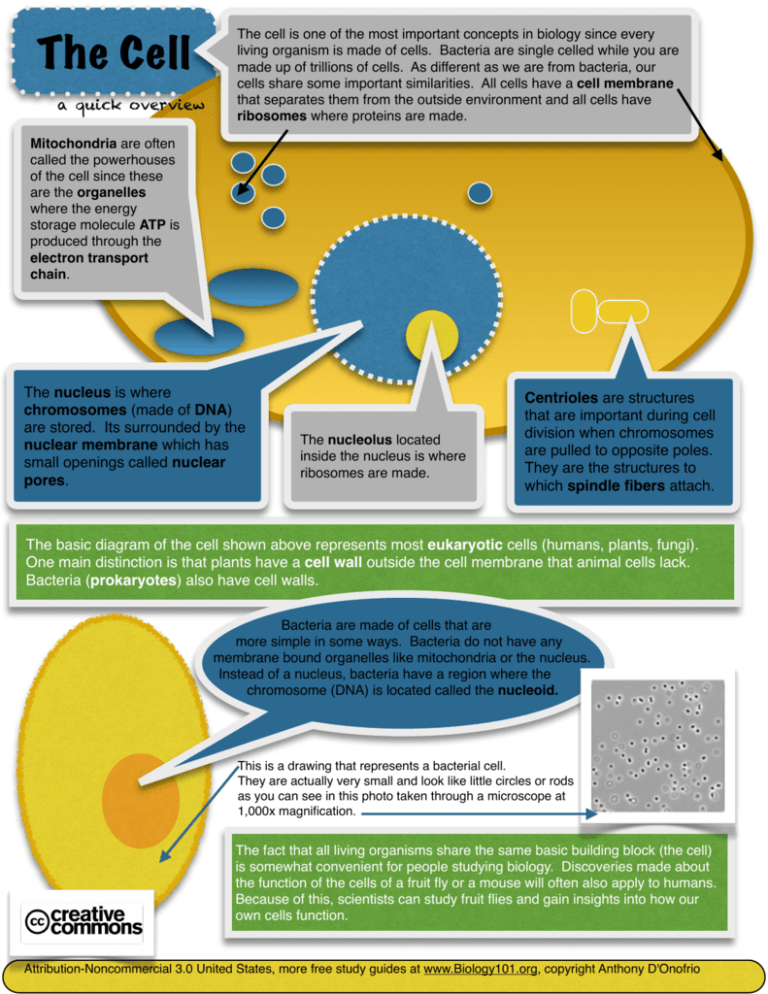
The Cell a quick overview The cell is one of the most important concepts in biology since every living organism is made of cells. Bacteria are single celled while you are made up of trillions of cells. As different as we are from bacteria, our cells share some important similarities. All cells have a cell membrane that separates them from the outside environment and all cells have ribosomes where proteins are made. Mitochondria are often called the powerhouses of the cell since these are the organelles where the energy storage molecule ATP is produced through the electron transport chain. The nucleus is where chromosomes (made of DNA) are stored. Its surrounded by the nuclear membrane which has small openings called nuclear pores. The nucleolus located inside the nucleus is where ribosomes are made. Centrioles are structures that are important during cell division when chromosomes are pulled to opposite poles. They are the structures to which spindle fibers attach. The basic diagram of the cell shown above represents most eukaryotic cells (humans, plants, fungi). One main distinction is that plants have a cell wall outside the cell membrane that animal cells lack. Bacteria (prokaryotes) also have cell walls. Bacteria are made of cells that are more simple in some ways. Bacteria do not have any membrane bound organelles like mitochondria or the nucleus. Instead of a nucleus, bacteria have a region where the chromosome (DNA) is located called the nucleoid. This is a drawing that represents a bacterial cell. They are actually very small and look like little circles or rods as you can see in this photo taken through a microscope at 1,000x magnification. The fact that all living organisms share the same basic building block (the cell) is somewhat convenient for people studying biology. Discoveries made about the function of the cells of a fruit fly or a mouse will often also apply to humans. Because of this, scientists can study fruit flies and gain insights into how our own cells function. Attribution-Noncommercial 3.0 United States, more free study guides at www.Biology101.org, copyright Anthony D'Onofrio

